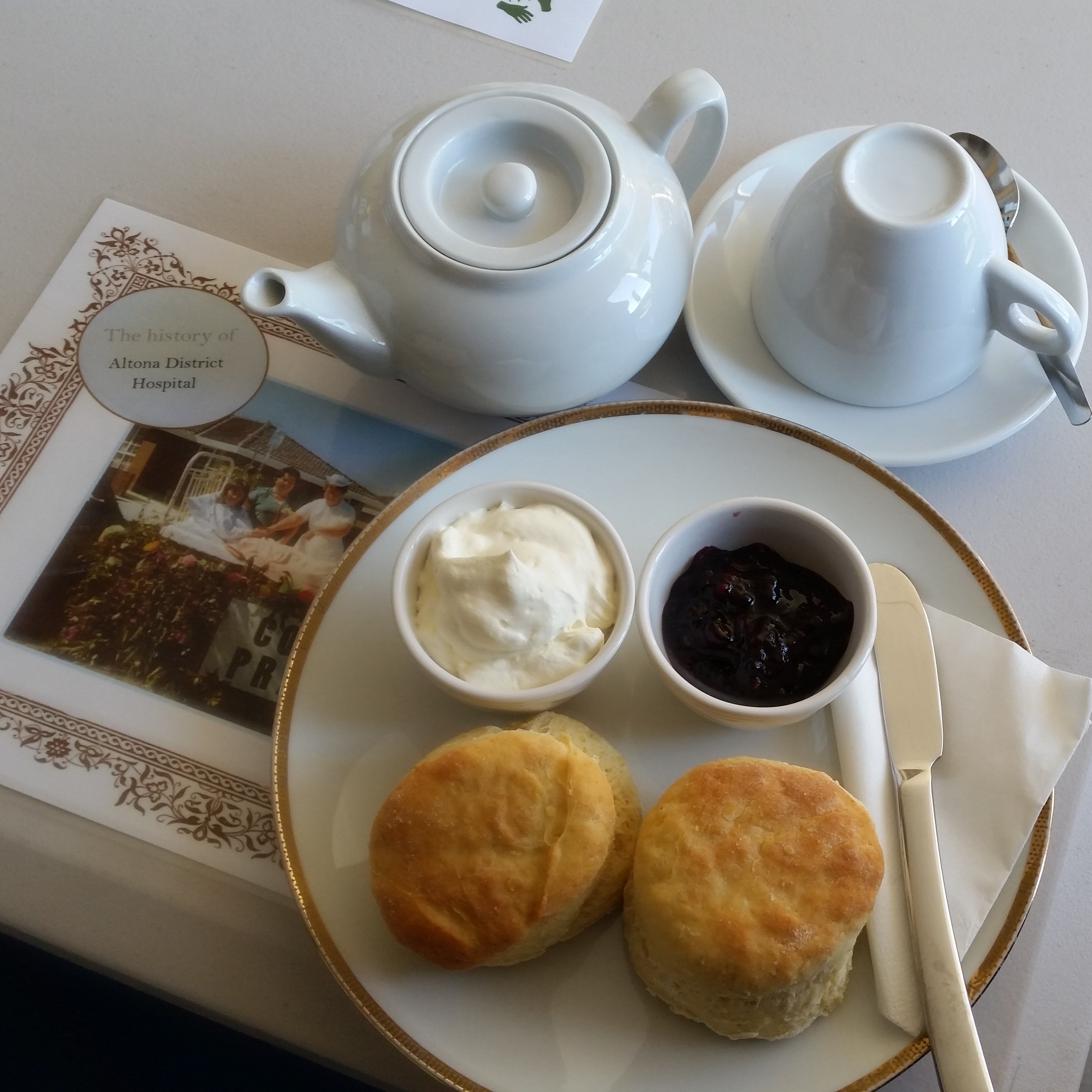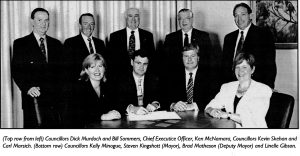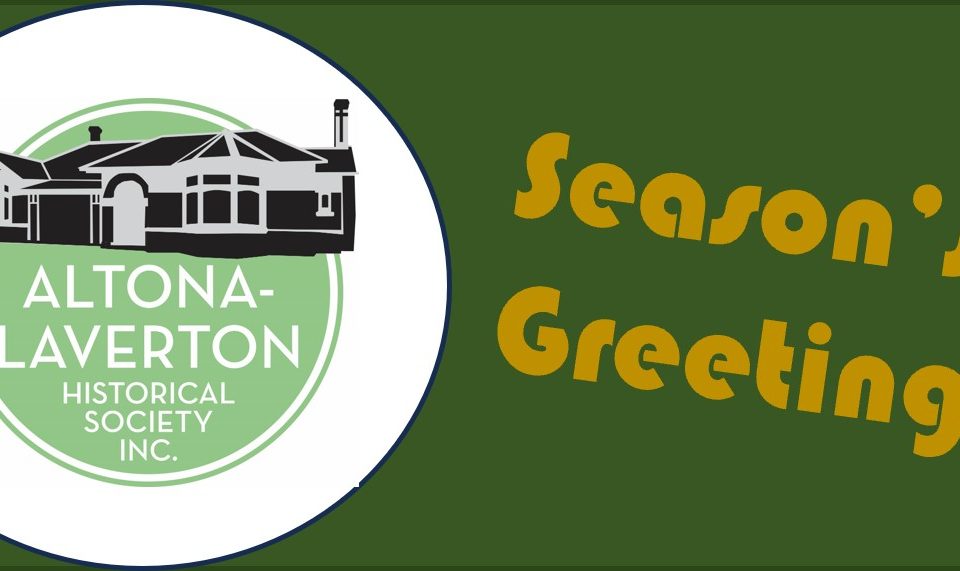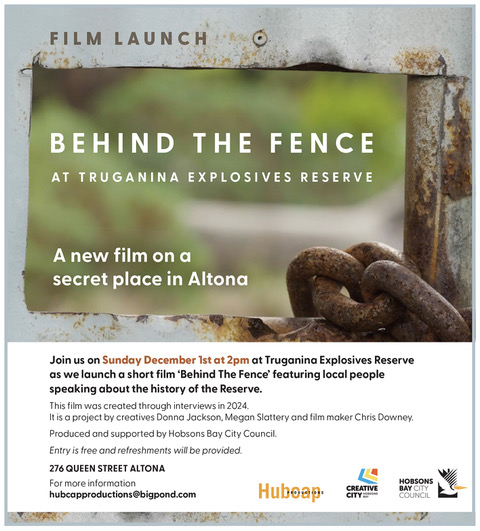Willi Lit Fest comes to the Homestead
May 30, 2024
Devonshire Teas are back commencing 1 September 2024! BOOK NOW!
July 20, 2024 This year marks 30 years since the Victorian Local Government Board (under the Kennett Government) instigated Council amalgamations throughout Victoria. This saw the elimination of 210 Councils and the creation of 79 new Councils through an amalgamation process. On 22 June 1994 Hobsons Bay City was created with the amalgamation of the Cities of Altona and Williamstown and parts of the Cities of Werribee (Laverton) and Footscray (South Kingsville).
This year marks 30 years since the Victorian Local Government Board (under the Kennett Government) instigated Council amalgamations throughout Victoria. This saw the elimination of 210 Councils and the creation of 79 new Councils through an amalgamation process. On 22 June 1994 Hobsons Bay City was created with the amalgamation of the Cities of Altona and Williamstown and parts of the Cities of Werribee (Laverton) and Footscray (South Kingsville).
It also saw the appointment of three Government appointed Commissioners – Mr Don Gillies, Mrs Maureen Breen, and Mr Ernest Barr. The commissioners’ job was to create one council where there had been two and areas outside of their municipal boundaries. While the Kennett reforms were successful in reducing the number of councils, it needs to be borne in mind that the reforms were hurriedly implemented and did not ‘involve intense consultation with councillors, staff and communities of amalgamating councils’[1].
It is fair to say that at the time “There was a fair degree of sadness and regret at the closure of the old city councils, and the long period of no elected representatives forced on communities by the then state government.” For the City of Altona, it was the added grief of the loss of its community hospital, that had operated since 1932, funded and supported by the residents.
Hobsons Bay ushered in a new era on Saturday 16 March 1996 when the City’s historic first Council elections were held. The newly elected Councillors brought with them a mix of considerable local government experience and differing perspectives. Six of the eight Councillors had previously been elected to local government positions. The Councillors included Linelle Gibson, Steven Kingshott, Carl Marsich, Brad Matheson, Kelly Minogue, Dick Murdoch, Kevin Skehan and Bill Sommers. They were elected from a total of 25 candidates that stood for election across four wards. The Chief Executive Office was Kevin McNamara and the first Mayor was Cr Steven Kingshott, with his deputy being Cr Brad Matheson. Councillors were sworn in at a special Council meeting on 20 March 1996. The new council governed from the former City of Altona offices in Civic Parade.
 Since these first elections there have been a further seven Council elections that have seen 30 individual Councillors elected to represent the residents of Hobsons Bay. Of these 17 have also undertaken the role of Mayor. The longest standing Hobsons Bay Councillor is Cr Peter Hemphill who was first elected in 1999 and has served (including 2024) for 25 years.
Since these first elections there have been a further seven Council elections that have seen 30 individual Councillors elected to represent the residents of Hobsons Bay. Of these 17 have also undertaken the role of Mayor. The longest standing Hobsons Bay Councillor is Cr Peter Hemphill who was first elected in 1999 and has served (including 2024) for 25 years.
This year, Hobsons Bay council is among 39 of Victoria’s 79 local government areas that is currently under review. For Hobsons Bay residents, this means that in October 2024 they will be voting for one councillor in each of seven much smaller wards, as opposed to ‘multi-councillors’ in large wards as they did in 2020.
This 30th anniversary is an excellent opportunity for us all to take stock of what has been achieved so far and to look forward to our city’s directional plan for the next 30 years. Hobsons Bay is home to over 92,000 people and covers an area of 64.20 square kms. Hobsons Bay is located at the northern end of Port Phillip Bay and is home to the suburbs of Altona, Altona Meadows, Altona North, Brooklyn, Laverton, Newport, Seabrook, Seaholme, South Kingsville, Spotswood, Williamstown and Williamstown North.
Each of these suburbs has its own unique character from the historic seaport of Williamstown, with its range of heritage buildings, to the more recently developed residential areas of Altona Meadows and Seabrook. Hobsons Bay’s rich natural environment is one of its greatest assets. The area boasts over 20 kilometres of beaches and foreshore areas and is home to significant coastal wetlands, five creek systems, remnant native grasslands, and important flora and fauna habitats.
The community’s vision for Hobsons Bay[2] is that by 2030 “embracing our heritage, environment and diversity, we – the community of Hobsons Bay – will be an inclusive, empowered, sustainable and visionary community, led and supported by a progressive Council of excellence.”
[1] Vince, A (1997), ‘Amalgamation’ in Dollery, B and Marshall, N (Eds), Local Government: Reform and Renewal, Macmillan: Melbourne, pp 151-171.)
[2] The Hobsons Bay 2030 Community Vision Report, 2017, Hobsons Bay City Council




